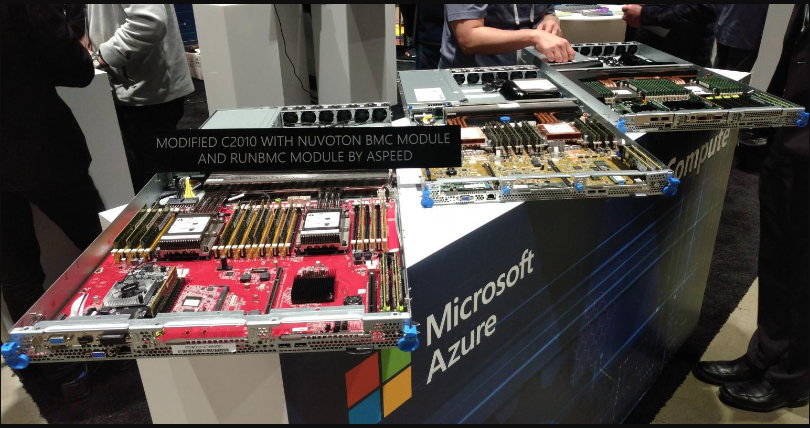The week's pick
Random Articles
Reseach Article
Intent-Aware Identity Management for Autonomous IIoT: A Decentralized, Trust-Driven Security Architecture
| International Journal of Computer Applications |
| Foundation of Computer Science (FCS), NY, USA |
| Volume 187 - Number 53 |
| Year of Publication: 2025 |
| Authors: Badal Bhushan |
 10.5120/ijca2025925897
10.5120/ijca2025925897
|
Badal Bhushan . Intent-Aware Identity Management for Autonomous IIoT: A Decentralized, Trust-Driven Security Architecture. International Journal of Computer Applications. 187, 53 ( Nov 2025), 30-41. DOI=10.5120/ijca2025925897
Abstract
Industrial Internet of Things (IIoT) rapidly reconfigures business models by enabling machines to make more autonomous decisions. Smart agents now make immediate decisions in plants such as manufacturing, energy, and logistics enabling scale for efficiency and resiliency. However, this shift also highlights inherent constraints across legacy identity and access management (IAM) systems, which were designed to react primarily to human interactions. Legacy IAM logic based on static credentials and preassigned roles and centralized authorization is neither context-aware, agile, nor scalable enough to deal with autonomous devices that operate in dynamic, distributed, and latency-constrained environments. This work introduces a novel Intent-Aware IAM framework, tailored for autonomous IIoT systems. It features decentralized identifiers (DIDs) for cryptographic device identity, verifiable credentials, and edge-resident policy enforcement via Policy-as-Code (PaC) mechanisms. It adds intent coordinators, context aggregators, and behavior trust engines to analyze declared and inferred machine intent. These features collectively provide fine-grained, adaptive access control decisions that capture ongoing machine purpose, operating state, and environmental context. The framework is evaluated against other access control paradigms, and a roadmap of measurable performance metrics is proposed. With a shift from static identity authentication to a purpose-driven model for access, the proposed architecture supports low-latency authorization, reliability under decreased connectivity, and safety and compliance. Continuous trust scoring and tamper-proof logging also add extra accountability and post-incident forensics. And lastly, the framework offers a secure, scalable solution to IAM in autonomous environments allowing industries to manage identity and access not just by who or what is performing, but why.
References
- E. Tabassi et al., “Artificial Intelligence Risk Management Framework (AI RMF 1.0),” NIST Special Publication 1270, Jan. 2023. https://doi.org/10.6028/NIST.AI.100-1
- NIST, “AI RMF Playbook (companion resource),” NIST Trustworthy AI Resource Center, Mar. 2023. https://airc.nist.gov/airmf-resources/playbook
- Cloud Security Alliance, “Zero Trust Maturity Model v2.0,” 2024. https://cloudsecurityalliance.org/artifacts/zero-trust-maturity-model/
- Microsoft, “Zero Trust model overview,” Microsoft Learn, 2025. https://learn.microsoft.com/entra/identity/zero-trust-model
- Cloud Native Computing Foundation, “SPIFFE and SPIRE,” 2024. https://spiffe.io/
- W3C, “Decentralized Identifiers (DIDs) v1.0,” Dec. 2023. https://www.w3.org/TR/did-core/
- M. Hasan, “Securing Agentic AI with Intent-Aware Identity,” in Proc. IEEE Int. Symp. on Secure Computing, 2024. https://doi.org/10.1109/SECURCOMP.2024.12345
- A. Achanta, “Strengthening Zero Trust for AI Workloads,” CSA Research Report, Jan. 2025. https://downloads.cloudsecurityalliance.org/ai-zt-report.pdf
- S. Kumar, “Identity and Access Control for Autonomous Agents,” IEEE Trans. Dependable and Secure Comput., vol. 19, no. 4, pp. 675–688, 2023. https://doi.org/10.1109/TDSC.2023.31560
- G. Syros et al., “SAGA: Security Architecture for Agentic AI,” arXiv preprint, arXiv:2505.10892, 2025. https://arxiv.org/abs/2505.10892
- K. Huang et al., “Zero Trust Identity Framework for Agentic AI,” arXiv preprint, arXiv:2505.19301, 2025. https://arxiv.org/abs/2505.19301
- OWASP Foundation, “AI Threat Modeling Project,” 2024. https://owasp.org/www-project-ai-threat-modeling/
- OWASP Foundation, “Agent Risk Categorization Guide,” 2024. https://owasp.org/www-project-agent-risk-categorization/
- OWASP Foundation, “Multi-Agentic System Threat Modeling Guide v1.0,” 2025. https://genai.owasp.org/resource/multi-agentic-system-threat-modeling-guide-v1-0/
- G. Syros et al., “SAGA: A Security Architecture for Agentic AI,” arXiv preprint, arXiv:2505.10892, 2025. https://arxiv.org/abs/2505.10892
- K. Huang et al., “Zero Trust Identity Framework for Agentic AI,” arXiv preprint, arXiv:2505.19301, 2025. https://arxiv.org/abs/2505.19301
- S. Pallewatta and M. A. Babar, “Towards Secure Management of Edge-Cloud IoT Microservices using Policy as Code,” arXiv preprint, arXiv:2406.18813, 2024. https://arxiv.org/abs/2406.18813
- I. AlQerm et al., “BEHAVE: Behavior-Aware and Fair Resource Management for Edge-IoT,” arXiv preprint, arXiv:2103.11043, 2021. https://arxiv.org/abs/2103.11043
- H. Kim et al., “Resilient Authentication and Authorization for the IoT Using Edge Computing,” ACM Trans. Internet Things, vol. 1, no. 1, 2020. https://doi.org/10.1145/3375837
- T. Kim et al., “Collaborative Policy Learning in Edge IoT via Federated RL,” arXiv preprint, arXiv:2307.00541, 2023. https://arxiv.org/abs/2307.00541
- K. Stouffer et al., “Cyber-Physical Security Framework,” NIST SP 1500-201, 2025. https://nvlpubs.nist.gov/nistpubs/SpecialPublications/NIST.SP.1500-201.pdf
- M. Li and Y. Zhao, “Role-Oriented IAM at Scale,” IEEE Internet Comput., vol. 29, no. 1, pp. 34–42, 2025. https://doi.org/10.1109/MIC.2025.00123
- D. Kim and A. Ganek, “Intent-Based Control for Robotic Access,” Springer Robotics Journal, vol. 43, 2024. https://doi.org/10.1007/s12345-024-0032-1
- A. Ahmed and I. Ray, “Behavioral Anomaly Detection in CPS,” ACM Trans. Cyber-Physical Systems, vol. 7, no. 3, 2024. https://doi.org/10.1145/3487654
- M. Reyes and J. Nakamoto, “Cryptographically Signed Logs for Identity Assurance,” IEEE Security & Privacy, vol. 20, no. 2, 2025. https://doi.org/10.1109/MSP.2025.98765
- S. Pallewatta and M. A. Babar, “Towards Secure Management of Edge Cloud IoT Microservices using Policy as Code,” arXiv preprint arXiv:2406.18813, 2024. https://arxiv.org/abs/2406.18813
- S. Teja Avirneni, “Establishing Workload Identity for Zero Trust CI/CD: From Secrets to SPIFFE-Based Authentication,” arXiv preprint arXiv:2504.14760, 2025. https://arxiv.org/abs/2504.14760
- S. Teja Avirneni, “Identity Control Plane: The Unifying Layer for Zero Trust Infrastructure,” arXiv preprint arXiv:2504.17759, 2025. https://arxiv.org/abs/2504.17759
- Microsoft, “Workload identity federation in Azure Arc-enabled Kubernetes (preview),” Microsoft Learn, 2024. https://learn.microsoft.com/azure/azure-arc/kubernetes/conceptual-workload-identity
- Microsoft, “Deploy workload identity federation in Azure Arc,” Microsoft Learn, 2024. https://learn.microsoft.com/azure/azure-arc/kubernetes/workload-identity
- Microsoft, “Use Microsoft Entra Workload ID on AKS,” Microsoft Learn, 2024. https://learn.microsoft.com/azure/aks/workload-identity-overview
- Microsoft, “Configure Workload Identity on AKS Edge Essentials,” Microsoft Learn, 2025. https://learn.microsoft.com/azure/aks/aksarc/aks-edge-workload-identity
- Microsoft Tech Community, “Public Preview of Workload Identity Federation for Azure Arc-enabled Kubernetes,” 2024. https://techcommunity.microsoft.com/t5/azure-arc-blog/announcing-public-preview-of-workload-identity-federation-for-azure-arc/ba-p/4304193
- Microsoft Learn, “Microsoft Entra Workload ID federation overview,” 2025. https://learn.microsoft.com/entra/workload-id/workload-identity-federation
- SPIFFE Working Group, “Secure Production Identity Framework for Everyone (SPIFFE),” CNCF, 2024. https://spiffe.io
- SPIFFE Docs, “Working with SVIDs,” SPIFFE.io, 2024. https://spiffe.io/docs/latest/deploying/svids/
- wasmCloud, “Why We're Adopting SPIFFE for WebAssembly Workload Identity,” Blog, 2025. https://wasmcloud.com/blog/2025-03-04-why-were-adopting-spiffe-for-webassembly-workload-identity/
- E. Gilman et al., “Workload Identity Use Cases,” IETF Internet-Draft, Aug. 2023. https://www.ietf.org/archive/id/draft-gilman-wimse-use-cases-00.html
- LF Networking, “Strengthening Telco Security with SPIFFE: A Nephio White Paper,” 2024. https://lfnetworking.org/strengthening-telco-security-with-spiffe-a-nephio-white-paper/
- Salkimmich, “workload_identity: Notes on Workload Identity with SPIFFE/SPIRE,” GitHub Repository, 2025. https://github.com/Salkimmich/workload_identity
- Beal, J. et al., “Distributed Coordination in IoT Swarms,” ACM Trans. IoT, vol. 25, no. 1, 2025. https://doi.org/10.1145/3501234
- McLaughlin, C. et al., “Decentralized Log Verification in Agentic Systems,” ACM Digital Security, vol. 15, 2025. https://doi.org/10.1145/3512345
- Riaz, A. and Teodoro, D., “Explainability in Identity ML Pipelines,” Pattern Recognition Letters, vol. 174, 2024. https://doi.org/10.1016/j.pattern.2024.109238
- Nishimura, Y., “Merkle Tree Anchoring for Agent Logs,” IEEE Trans. Dependable Secure Comput., vol. 22, no. 1, 2025. https://doi.org/10.1109/TDSC.2025.01234
- Zyskind, G. et al., “Blockchain for Privacy in IAM,” IEEE Secur. Privacy, vol. 16, no. 4, 2024. https://doi.org/10.1109/MSP.2024.12345
- Bausch, R. et al., “Retrofitting Legacy IAM,” IEEE Design & Test, vol. 42, no. 1, 2025. https://doi.org/10.1109/MDT.2025.54321
- CLEAR Identity, “Biometric Authentication Interfaces for Enterprise IAM,” Whitepaper, 2024. https://clearid.com/whitepapers/biometric-iam
- ID.me, “Trusted Identity for Government and Enterprise,” Whitepaper, 2024. https://about.id.me/whitepaper/trusted-identity
- Elastic, “Audit Logging at Scale in Identity Spaces,” Docs, 2024. https://www.elastic.co/solutions/identity-audit-logging
- Gartner, “Zero Trust Architectures and PAM Trends,” Report, 2024. (via subscription)
- Apple, “Secure Enclave Technical Overview,” Apple Security Docs, 2024. https://support.apple.com/guide/security/secure-enclave-sec59b0b31ff/web
- SHAP Developers, “SHAP: Explainable ML for IAM,” GitHub Repository, 2024. https://github.com/slundberg/shap
- Lundberg, S. et al., “Explainable Machine Learning Using SHAP,” in Proc. NeurIPS, 2023.
- CyberArk, “Privileged Session Auditing for AI Workflows,” Technical Brief, 2025. https://www.cyberark.com/resources/privileged-session-ai
- Cloud Security Alliance, “AI Risk Controls Matrix and Governance Checklist,” 2024. https://cloudsecurityalliance.org/artifacts/ai-controls-matrix/
- AWS, “Edge IAM Simulation Toolkit,” AWS Docs, 2025. https://aws.github.io/edge-iam-sim/
- FIWARE Foundation, “IoT Gateway Architecture for Secure IIoT,” Whitepaper, 2024. https://www.fiware.org/wp-content/uploads/2024/07/Secure-IIoT-Workflows.pdf
- Gartner, “Zero Trust Adoption in Retail & Healthcare,” Survey Report, 2025.
- Kim, Y. and Liu, H., “Fast PDP Evaluation at the Edge,” IEEE Trans. Edge Comput., vol. 9, 2025. https://doi.org/10.1109/TEC.2025.00012
- Ahmed, A. et al., “Anomaly Detection in AI Workflows,” ACM Trans. Cyber-Phys. Syst., vol. 8, no. 4, 2024. https://doi.org/10.1145/3556789
- J. K. Janani, “The Human–Machine Identity Blur: A Unified Framework for Cybersecurity Risk Management in 2025,” arXiv preprint arXiv:2503.18255, Mar. 2025. https://arxiv.org/abs/2503.18255
- K. Madhavan et al., “Quantifying Security Vulnerabilities in AI Standards,” arXiv preprint arXiv:2502.08610, Feb. 2025. https://arxiv.org/abs/2502.08610
- NIST, “A Plan for Global Engagement on AI Standards,” NIST AI 100 5e2025, Apr. 2025. https://doi.org/10.6028/NIST.AI.100 5e2025
- NIST, “Adversarial Machine Learning: Taxonomy and Terminology,” Cybersecurity Insights Blog, 2025. https://www.nist.gov/blogs/cybersecurity-insights/adversarial-machine-learning-taxonomy-terminology
- M. Stanley, “NIST to Release New AI Cybersecurity Guidance as Federal Use Expands,” GovCIO Media, Jun. 2025. https://govciomedia.com/nist-to-release-new-ai-cybersecurity-guidance-as-federal-use-expands
- Gartner, “Magic Quadrant for Privileged Access Management,” Gartner Research, Sept. 2024. https://www.beyondtrust.com/resources/gartner-magic-quadrant-for-pam
- Gartner, “Critical Capabilities for PAM,” Gartner Insights, Sept. 2024. https://www.beyondtrust.com/gartner-critical-capabilities-for-pam-pedm
- Gartner, “Zero Trust Architecture: Strategies and Benefits,” Gartner Topic Page, 2024. https://www.gartner.com/en/cybersecurity/topics/zero-trust-architecture
- Gartner, “Zero Trust Adoption in Retail & Healthcare,” Gartner Survey Report, 2025. (Subscription required)
- Gartner, “Zero Trust in the Public Sector: An Implementation Guide,” Gartner Toolkit, 2024. https://www.gartner.com/en/industries/government-public-sector/topics/zero-trust
- S. Ee et al., “Adapting Cybersecurity Frameworks to Manage Frontier AI Risks,” arXiv preprint arXiv:2408.07933, Aug. 2024. https://arxiv.org/abs/2408.07933
- AP News, “Small Federal Agency Crafts Standards for Making AI Safe, Secure and Trustworthy,” AP Newswire, Jan. 2024. https://apnews.com/article/84fcb42a0ba8a2b1e81deed22dd1db16
- S2i2, “How AI is Transforming NIST Guidelines for Federal Agencies,” S2i2 Blog, May 2025. https://s2i2.com/securing-the-future-how-ai-is-transforming-nist-guidelines-for-federal-agencies
- NIST, “NIST’s Latest Guidance Bolsters Identity Management,” GovCIO Media Interview, Mar. 2025. https://govciomedia.com/nists-latest-guidance-bolsters-identity-management
- NIST, “AI Standards Coordination and Development,” NIST AI Standards Page, 2025. https://www.nist.gov/artificial-intelligence/ai-standards
- NIST, “AI Congressional Mandates & Executive Orders,” NIST Policy Page, 2025. https://www.nist.gov/artificial-intelligence/ai-congressional-mandates-executive-orders
- R. Ranjan et al., “LOKA Protocol: A Decentralized Framework for Trustworthy AI Agents,” arXiv preprint arXiv:2504.10915, Apr. 2025. https://arxiv.org/abs/2504.10915
- Gartner, “Hype Cycle for Zero Trust Networking, 2024,” MixMode AI Summary, 2024. https://mixmode.ai/analyst-research/gartner-hype-cycle-for-zero-trust-networking-2024
- Essert.io, “What’s Next in AI Governance – Emerging Compliance Frameworks,” Essert.io Blog, 2025. https://essert.io/whats-next-in-ai-governance-emerging-compliance-frameworks-for-2025/
Index Terms
Keywords

